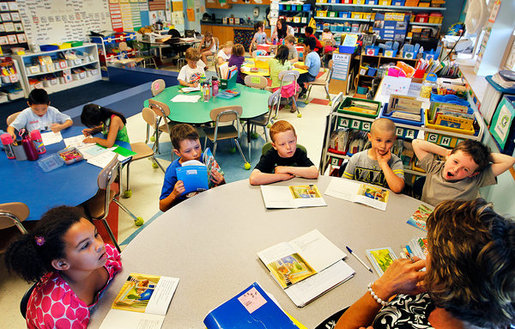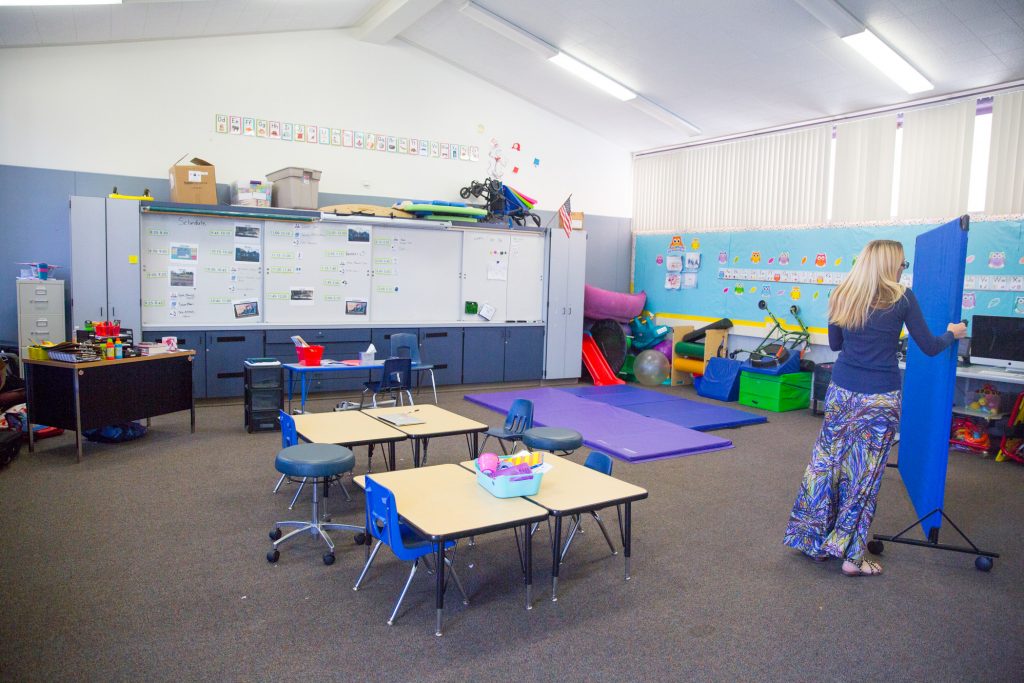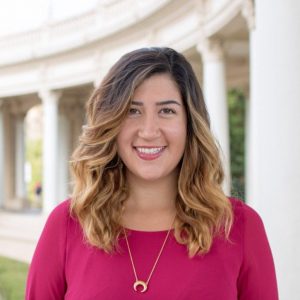by Jen Sobieski, MSEd | April 14, 2022
Special education services have varied over the years and continue to progress, but what exactly does it mean to have a student in a special education classroom? Well, that’s just the thing, there’s not one clear cut answer – special education is highly individualized and customizable.
For both educators and parents, knowing the options can be the best way to see where a student might thrive best! The most common special education settings are inclusion classes, resource rooms, and self-contained classrooms. Each of them looks and functions very differently while having their own unique pros and cons.

Credit: Mrs. Ahmedani’s Resource Room
Inclusion or Co-Taught Classrooms
The term “inclusion” has become a buzz word in the world of education, especially in recent years. Inclusion means that there are general education and special education students in the same classroom, but this varies from program to program at each school. It is becoming more popular for inclusion classrooms to be co-taught, which means that there are two licensed teachers in the room: one with a general education degree, and one with a special education degree. The purpose of this is to provide students with individualized education plans (IEPs) the accommodations and modifications that they need to best learn the grade level content alongside their general education peers.
Pros
- Inclusion is a wonderful message to promote! Students see first-hand that not everyone learns the same way.
- A successful inclusion classroom has various levels of academic tasks which enables everyone to learn, whether students have an IEP or not.
Cons
- From a teacher’s perspective, we don’t always get to select our co-teacher. Sometimes having two lead teachers who haven’t met or worked together can cause tensions or create an uncomfortable learning environment for the students.
- When rosters are created, the number of students with IEPs is taken into account but typically their severity is not. For example, having 5 students with IEPs for minor attention deficits is vastly different than having 5 students with IEPs for moderate Autism. If the needs are too severe, two teachers may not be enough, and other students may become distracted by the chaos that can occur in the room. These students may be best served in a self-contained classroom – more on this below.

Credit: The Saxon Scribe
Resource Rooms
Resource rooms are the least restrictive option for a student who receives special education services. Resource rooms provide a space for students to have time with a special educator to enhance concepts they are learning in the general education or inclusion classroom. Students have extra time for assessments, can ask clarifying questions and focus on IEP goals that might need a bit more TLC.
Depending on their grade level or school’s structure, a student may still follow their everyday schedule, but under the resource room model, one of their assigned periods during the day would be “resource room” rather than an elective. As teachers, we are not always with students in their math or English classes but we use resource room time to step in and help with those subjects. In order for a student’s assigned resource room teacher to help with assignments from other classes, teachers must communicate about what work is being done in each of their classes and how that student can be best assisted.
Pros
- As the least restrictive environment, resource room is a great support for students with mild needs (attention deficits, learning disability, dyslexia, etc.). It can be a great first step for students who need some accommodations while maintaining the majority of their day in general education classes.
- Resource room allows students to find out what works best for their learning and to add another teacher to their support team, their resource room teacher.
Cons
- Sometimes as a first step for students, resource room is not enough support.
- Additionally, resource room looks different in every school. Due to funding and school resources, resource room can be structured in different ways. For example, some schools may have their own resource classroom which can be a calm, quiet environment, but others may use the hallway or an alcove as a pull out space for small groups, which is not always private or distraction-free.
- As a teacher in a resource room, we may see different behaviors than those that students exhibit in their other classes. For example, students may tell their resource room teacher they have no work to do or they are all caught up, but that is not always the case. And, if a resource room teacher does not collaborate with a student’s other teachers on the work that needs to be accomplished between classes, students may not hold themselves accountable for tasks.

Credit: AAPS District News
Self-Contained Classrooms
Self-contained classrooms are the most restrictive environment in a public school setting for students. Self-contained means that every student in the class has an IEP. The ratio of students to teachers and teacher aides varies based on the severity of the students’ needs. For example, a 12:1:1 classroom means 12 students, 1 teacher, and 1 teacher’s aide. A class with this ratio may consist of students with more academic needs rather than behavioral needs. A 6:1:2 class is typically for students with moderate-to-severe behaviors or physical needs; these classrooms often have small groups or 1-on-1 lessons taking place. Self-contained classrooms could also house speech, OT or PT lessons as well as adaptive classroom equipment.
One important consideration for self-contained classroom placement is that it can alter a student’s path to graduation. Alternative assessments are heavily modified assessments for students to take rather than standard state testing. These vary by state, and they are typically given to students with moderate and severe disabilities.
Students who are alternatively assessed are typically placed in self-contained classrooms for at least a portion of their day. Upon completion of high school, students who take alternate assessments will earn a certificate of completion rather than a traditional high school diploma. Students who take standard state testing, however, remain eligible to receive a high school diploma when they graduate high school. Additionally, all students have until age 21 or 22 (depending on the state) to work towards these degrees in a public school setting.
Placement in a self-contained classroom and pathways for graduation are discussed in IEP meetings and require parent consent before the placement occurs.
Pros
- Self-contained classrooms can be highly individualized.
- These classrooms always have the smallest possible number of students and highest number of teachers/aides which can only help students with tasks.
- Typically, self-contained classrooms are best suited for students with high behavioral needs or more severe disabilities. They can greatly help students who need support with life skills, vocational skills, transitional skills and social skills.
Cons
- Since self-contained classrooms are extremely specialized, they may not cover Common Core Standards or state testing requirements, and depending on the program, they may take a student off track of receiving a high school diploma.
- Students have the least exposure to inclusion or general education peers. While this is not a “Con” in every scenario, it is an important consideration for teachers and parents during the placement process.

Credit: Mountain View Voice
Although IEPs strive to place students in the least restrictive learning environment, there are many factors that play a role in helping a student learn best. Overall, the more special education settings that are offered at your school district, the better!
It’s important that students and their families work together to find the right amount of support for them in their school. Ultimately, educators and parents share a common goal which is to help our students be as successful and as independent as possible. Here at Frenalytics, we also share this goal! Our mission is to emphasize the importance of students living more independent lives through our revolutionary software that prioritizes the development of each student using it, giving each person a unique and meaningful education experience. Just like IEPs and specialized classroom settings, FrenalyticsEDU aims to prioritize personalization and independence.
Teachers across the country use FrenalyticsEDU in inclusion classrooms, resource rooms, and self-contained classrooms. Interactive learning sessions can be ran as a whole class, independently, or in small groups, which makes it extremely beneficial to educators. It can also be implemented as homework assignments and accessed by family members which benefits parents and guardians. Lastly, FrenalyticsEDU is designed to meet the student on their academic level and present it to them in a game which makes learning fun! FrenalyticsEDU understands the large variety of special education classrooms and works with educators and families to create a one-of-a-kind software platform to improve retention, teach life skills, collect data and report outcomes.
Want to see how FrenalyticsEDU helps special needs students live more independent lives?
Click here to learn more, or give us a call at (516) 399-7170.
Jen Gentile, MSEd started working with the special needs community in 2008 through various roles, including Best Buddies and Camp A.N.C.H.O.R, before joining the Teach for America Corps in San Diego, CA in 2018. As a teacher at Escondido High School in Escondido, CA, Jen championed the expansion of FrenalyticsEDU as a personalized learning tool for her students with Autism Spectrum Disorder (ASD), Down syndrome, and other complex intellectual disabilities. Now back in New York, Jen joins the Frenalytics team as a Special Education Consultant while simultaneously working with students as a fifth-year special ed teacher at Valley Stream Central High School. Contact Jen: jen@frenalytics.com

